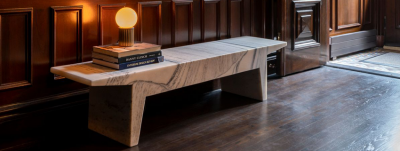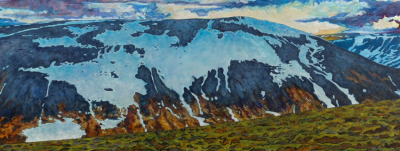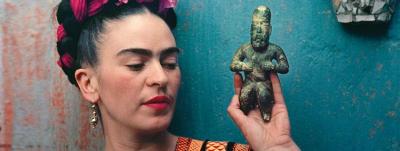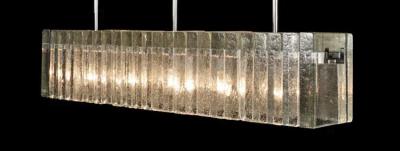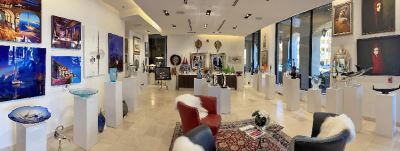American Encounters: Anglo-American Portraiture in an Era of Revolution
“Every American considers it his sacred duty to have a likeness of Washington in his home just as we have images of God’s saints, and [it is often] the finest and sometimes the sole decoration.”
– Pavel Svinin, Russian diplomat, 1811
From all contemporary accounts, George Washington struck an imposing figure. Tall, handsome, and statuesque, he stood at six feet two—a towering height for the eighteenth century. According to a fellow officer in the Continental Army, the General held a “pleasing and benevolent though commanding countenance,” with “penetrating” blue eyes, a strong chin, and clear, pale skin slightly flushed by the effects of the sun. In the countless depictions of Washington, favorable attributes such as these described not only the physical traits of America’s first President, but sketched the idealized image of America’s first national hero.
A master of the Grand Manner style, Sir Henry Raeburn rendered his well-heeled subjects in classical poses with idealized features against generalized settings. Small gestures hint at a sitter’s favorable attributes. Typical of his style is this rendering of the Scottish noble Robert Hay of Spott. His arms rest casually on his rifle; an untamed landscape extends behind him. A military uniform announces rank in one of Britain’s oldest regiments, the Royal Welch Fusiliers. With these details Raeburn suggests a brave and unpretentious character, but also old, landed wealth. Artists like Gilbert Stuart and Charles Willson Peale were familiar with the Grand Manner style, and repurposed it for American audiences.
Gilbert Stuart’s Constable-Hamilton portrait, so called because Alexander Hamilton received it as a gift from the merchant William Constable, is among the most famous of the first President. Shown here as the statesman, Washington clasps a document rather than the sword tucked by his side. Ships traverse a busy harbor in the distance, a reference to Washington’s successful efforts to avert a trade war with England. As Secretary of Treasury, Hamilton advised Washington to distance U.S. policy from England’s enemy, France, and declare neutrality, thus gratifying merchants whose livelihood relied upon peaceful commerce. Stuart profited from his renderings of Washington. The President sat for Stuart three times, yielding one extraordinary life study (known as the “Athenaeum” portrait) that, although unfinished, would become the basis for this portrait and many more, including that which appears on the one-dollar bill.

- Gilbert Stuart (American, 1755–1828), Portrait of Hugh Percy, Second Duke of Northumberland, ca. 1788.
Oil on canvas, 29¼ x 24½ inches.
High Museum of Art, Atlanta, Ga.
Purchase with funds from Alfred Austell Thornton in memory of Leila Austell Thornton and Albert Edward Thornton Sr., and Sarah Miller Venable and William Hoyt Venable (1993.14).
Retreating from Rhode Island to London on the eve of the American Revolution, Gilbert Stuart would become one of England’s most fashionable portraitists. Yet his infamously irascible character troubled Stuart’s professional success. In 1785, facing debtor’s prison, Stuart accepted an offer from Hugh Percy, the Second Duke of Northumberland, to withdraw to his estate. There, Stuart recovered his finances and painted this and other portraits of the British aristocrat. Percy, though a Royal Army officer during the Revolution, announced his sympathies for the rebels after concluding his service. A version of Stuart’s portrait of Percy hung in Boston’s Town Hall as a tribute to the duke.
Charles Willson Peale painted multiple versions of this full-length portrait commemorating Washington’s victory against the British at Princeton on January 3, 1777. With the enemy’s flag at his feet, Washington is portrayed as a powerful military leader, calmly pausing amid the battle’s aftermath. Originally commissioned for the city of Philadelphia in 1779, the portrait quickly became an international emblem of American resistance. Among the replicas likely painted by Peale, this version was rediscovered in the collections at the Palace of Versailles. It was probably owned by a French magistrate to King Louis XVI before the French Revolution and seized after the king’s execution.
In 1824, as the nation neared the fiftieth anniversary of its independence, Rembrandt Peale presented what would become one of the most widely reproduced portraits of George Washington. Known as the Porthole Portrait for the window effect of the oval, rusticated masonry surround, the image is an aggregate of several portraits made from life, including the Battle at Princeton (ca. 1779) by Rembrandt Peale’s father, Charles Willson Peale, and Gilbert Stuart’s “Athenaeum” portrait (1796). This portrait is one among seventy-nine versions Rembrandt painted after the original, which he titled Patriae Pater, or “Father of the Country.” With its monumental setting and ethereal backdrop, Washington’s image is elevated to the realm of the eternal, as a guardian of American democracy.
American Encounters: Anglo–American Portraiture in an Era of Revolution, on view at Atlanta’s High Museum of Art until January 18, 2015, features three well-known renderings of Washington shown in a few of his many roles: war hero, diplomat, and founding father. Washington’s iconic image is paired alongside two British military officers who fought against the American rebels in the Revolutionary War. While the subjects were, by national allegiance, in opposition, the artists who depicted them worked within a fluid, transnational environment, with influence and inspiration traveling between the new republic and England. Set against the backdrop of the American Revolution and its aftermath, this selection of portraits demonstrates that the complex dynamics of national and transatlantic politics extended into creative disciplines as well.
From the Revolution to the Civil War, portraiture was the most widely practiced and commercially successful artistic genre in the United States. In an age before photography, portrait painters offered Americans the utilitarian luxury of recording the likeness of one’s self or a loved one, or commemorating a famous personality, such as George Washington. Practiced by academically trained and self-taught artists alike, portraiture found its way into nearly every class of home—from the grandiose oil painting and elegantly sculptured marble bust to the intimate locket or the mass-produced print. The five works featured in the exhibition offer an opening to a deeper exploration on how, through self-imaging and presentation, Americans were beginning to define themselves and their new nation.
Anglo-American Portraiture in an Era of Revolution is the third of four installments in the American Encounters series, a multi-year project exploring the development of four key historical genres of art in the United States: landscape, genre, still life, and this year, portraiture. The collaborative series, which draws from collections at one French museum (Musée du Louvre) and three American museums (High Museum of Art, Crystal Bridges Museum of American Art, and the Terra Foundation for American Art), considers American art of the eighteenth and nineteenth centuries within the broader political and cultural contexts of international exchange. The exhibition was curated by Kevin Murphy, Eugénie Prendergast Curator of American Art, Williams College Museum of Art, and formerly Curator of American Art at the Crystal Bridges Museum of American Art. The presentation at the High Museum was made possible by The Coca-Cola Company, American Friends of the Louvre, and the Terra Foundation of American Art. For information visit www.high.org or call 404.733.4444.
Stephanie Mayer Heydt is the Margaret and Terry Stent Curator of American Art, High Museum of Art, Atlanta, Ga.
This article was originally published in the Winter 2014 issue of Antiques & Fine Art magazine, a digitized version of which is available on afamag.com. InCollect.com is a division of Antiques & Fine Art, AFAnews, and AFA Publishing.



























